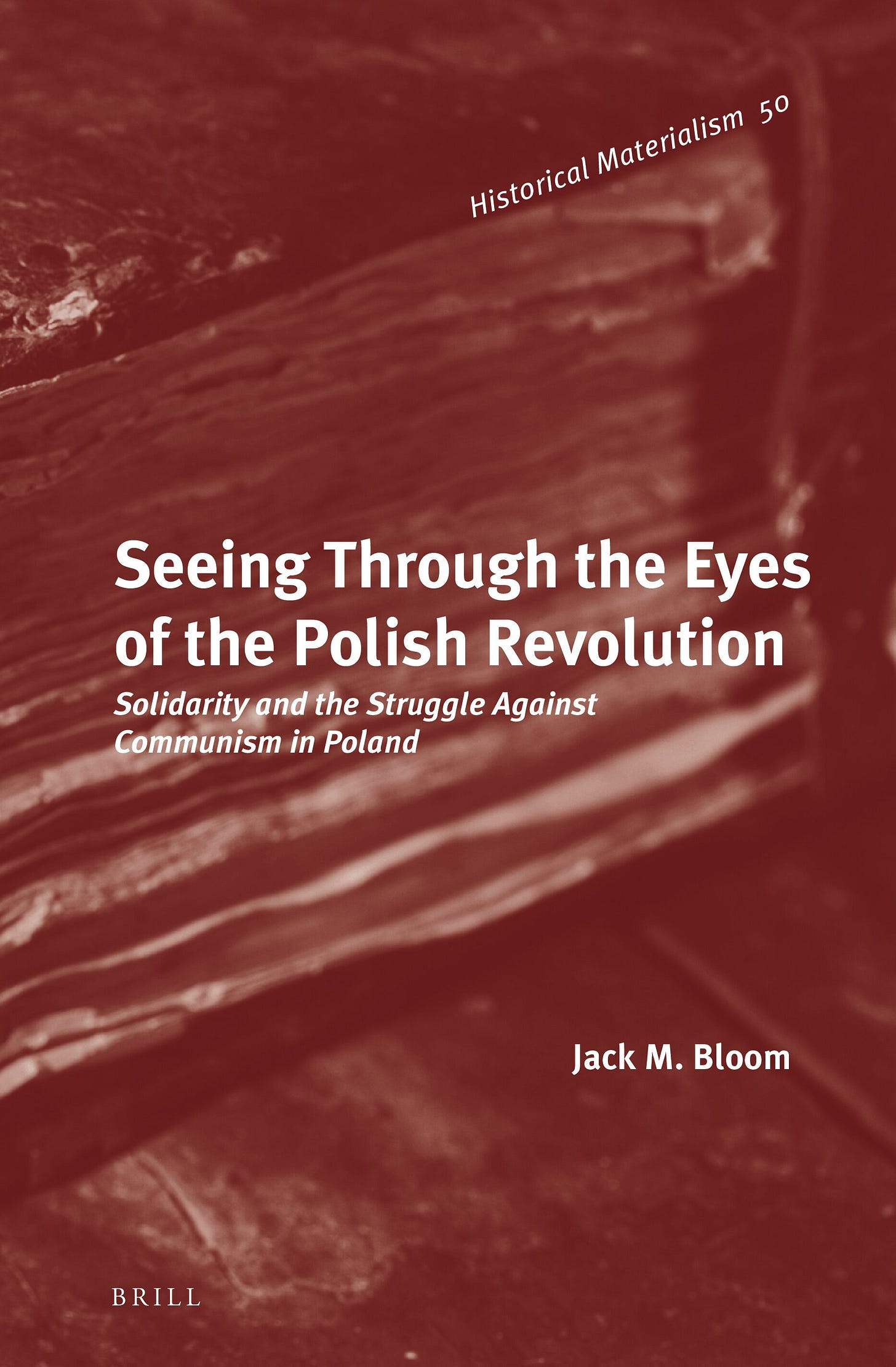Thoughts on Seeing Through the Eyes of the Polish Revolution: Solidarity and the Struggle Against Communism in Poland by Jack M. Bloom
Image description: Picture of the book cover, which consists of the book’s title on top of a book on table, with the book, the table and the background coloured in red.
This book has several merits. First, it examines the political and economic framework within which the Polish opposition developed through it detailing how after the Soviets overthrew the Nazis, they established a Soviet-type society, where a nomenklatura was the ruling class that exploited and oppressed the Polish workers and peasants, with such exploitation and oppression leading to class struggle which the Polish opposition arose out of.
Second, it analyses the period from the beginnings of the Soviet-back Polish regime in 1947 to 1980. More specifically, it concentrates on the critical events that alienated a whole generation by the end of the 1960’s, including the 1956 revolt, the 1968 revolt, the 1970 strike wave and the 1976 protests as well as on the consequent emergence of the Polish opposition in the 1970’s.
Third, it details how the strike wave of August 1980 led to the formation of the Solidarity union and then examines the conflict between the Solidarity union and the ruling party in Soviet-backed Poland from late 1980 up to the declaration of martial law by the regime on the night of 12th–13th December 1981.
Fourth, it looks at the imposition of martial law and considers its impact on the Polish opposition and then looks at how that opposition was rebuilt and how it ultimately forced an end to the Soviet-backed Polish regime in 1989.
Fifth, it does all of the above through extensive use of primary and secondary sources on the Solidarity union as well as through interviews with over 150 Solidarity union members, students, other oppositionists as well as officials that were part of the Soviet-backed Polish regime.
However, this book does have its issues. First, its examination of the Soviet-backed Polish regime is descriptive and even though the author does invoke Karl Marx throughout the book, it does not connect its examination of the Soviet-backed Polish regime with Marxist theoretical debates about the Soviet-type societies.
Second, although it does discuss the involvement of women workers in the Solidarity union and the broader opposition movement, it does not connect women workers experiences to how social reproduction was organised under the Soviet-backed Polish regime or to the broader gender relations of that regime.
Third, its discussion of the relation of Upper Silesian workers to the rest of the Polish working-class as well as how antisemitism manifested in Polish society focuses on their empirical manifestations and does not discuss how both arose out of processes of nation (re)formation and of racialisation in Polish society in this period.
Fourth, its discussion of how the Polish Catholic Church was divided between those who collaborated with the Soviet-backed Polish regime and those who supported the opposition is a missed opportunity, as it does not apply Marxist theories and analyses of religion when engaging in this discussion.
Fifth, while it talks about how the Solidarity union from its beginnings until the imposition of martial law in December 1981 supported reforming the Soviet-backed Polish regime, there is no in-depth examination of its political programme or its political tendencies in order to understand how in its early years it supported democratic socialism.
Sixth, although it discusses how following the imposition of martial law in December 1981, the Solidarity union shifted from wanting to reform the Soviet-backed Polish regime to overthrowing it, the book does not discuss how from end of 1981 onwards, neoliberal ideology became increasingly popular within the Solidarity union to the point that by the time it took part in the Round Table Talks that led to the end of the Soviet-backed Polish regime in 1989, it was politicians that came from the Solidarity union that led the transition of Poland to neoliberal capitalism from the late 1980’s onwards. Related to this, the book briefly discusses the transition to neoliberal capitalism in Poland and ends in the early 1990’s, which means that it is unable to examine how from the late 1980’s to the present day, the Solidarity union has become the main union that backs the right-wing populist Law and Justice Party, which was last in power in Poland from 2015-2023. As a result, the book is unable and unwilling to examine a major question that arises when looking at the history of the Solidarity union: why and how did it shift from supporting democratic socialism to supporting neoliberal capitalism and what impact does this have on how we look at the Solidarity union historically and today?
Overall, I’d recommend this book, as it provides a general history of the Solidarity union movement’s rise, expansion, struggles and how it brought about the end of the Soviet-backed Poland regime in 1989.


